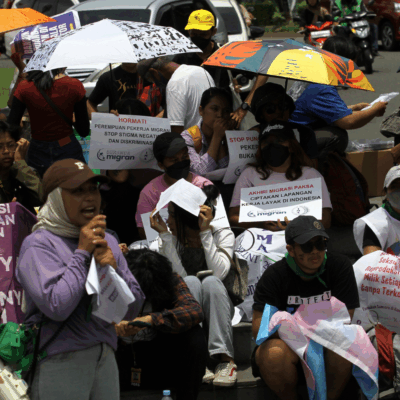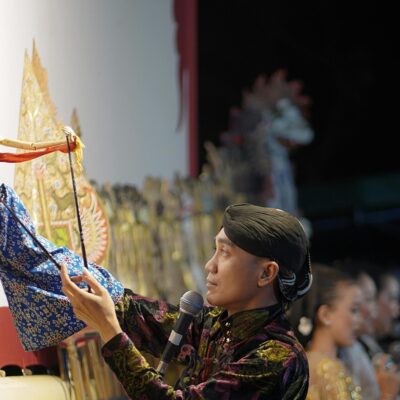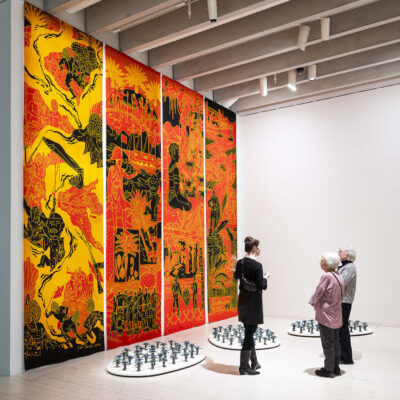The Asian Infrastructure Investment Bank (AIIB) is an increasingly prominent part of China’s growing global footprint.
The AIIB is a multilateral development bank established in 2016 to provide funding for infrastructure projects in Asia, formed at the initiative of the Chinese government. It has been headquartered in Beijing, had a Chinese president, and had a governance structure permitting the Chinese government—its largest shareholder—a veto over key decisions. With US$100 billion in capital, it has steadily expanded its loan portfolio, approving financing deals worth more than $USD57 billion by the end of January 2025.
The AIIB’s growing role as a source of development finance has been met with significant concern on the part of activists and scholars committed to human rights and environmental sustainability. The AIIB’s stated purpose includes ‘foster[ing] sustainable economic development’ and, to this end, it has expressed a commitment to managing the environmental and social risks associated with its projects in accordance with international best practice.
However, critics of the Bank have argued that it has failed to live up to this commitment. In their view, the Bank has often run roughshod over the rights of ordinary people, threatened the natural environment, undermined good governance, and more generally reinforced the predatory, extractive and oligarchic systems of capitalism that characterise many parts of the Asian region. This in turn, they have suggested, has reflected the fact that the Chinese government has privileged building linkages to politico-business and state elites in the region over reducing poverty, ensuring sustainable development, and promoting democracy and human rights.
This article assesses these claims in the context of Indonesia, one of the Bank’s largest borrowers. Focusing on the AIIB’s involvement in the Mandalika tourism development project in Central Lombok, an early substantial Bank investment in that country, we argue that AIIB financing has served, as its critics have suggested, to benefit politico-business and state elites at the expense of the rights of local communities; and in so doing, reinforced the predatory, oligarchic, and extractive model of capitalism that has characterised that country in recent decades. However, we also argue that there has been strong contestation of the AIIB’s activities in Indonesia—and the Mandalika project specifically—by an alliance of local community groups, domestic and international NGOs, and UN organisations, undermining the AIIB’s social licence to operate. This holds out some hope that the AIIB will improve its management of social and environmental risks and promote a more inclusive model of capitalism in the future.
The AIIB’s approach to Development
Traditional donors such as the World Bank, Asian Development Bank (ADB), and members of the OECD’s Development Assistance Committee have pursued an approach to development that has been heavily informed by neo-liberalism—the ideological framework that has dominated economic and social policy-making in the West since the late 1970s— and, to a somewhat lesser extent, liberal notions of democracy and human rights. They have also expressed commitment to the promotion of environmental sustainability, particularly since ‘sustainable development’ emerged as an international priority in the 1980s.
‘Emerging’ or ‘new’ donors such as China have been much less normatively committed to these objectives, instead pursuing an approach that has emphasised non-interference in the internal affairs of other countries and principles such as mutual benefit and solidarity. They have accordingly eschewed the use of conditionalities in providing aid and downplayed the environmental impacts of aid projects.
The AIIB has fit somewhere between these two poles. For instance, it has acknowledged that its infrastructure investments present a range of environmental and social risks including ones related to land acquisition, involuntary resettlement, gender equality, forced labour, child labour, worker safety, climate change, livelihoods, and indigenous peoples’ rights. It has sought to manage these risks through the development and application of an Environmental and Social Framework (ESF) which ‘integrat[es] good international practice on environmental and social planning and management of risks and impacts into decision-making on, and preparation and implementation of, Bank supported Projects’. It has also subjected itself to the tighter environmental and social safeguards of existing multilateral developments banks such as the World Bank and the Asian Development Bank, when co-financing projects with these institutions.
However, as numerous critics have noted, this approach has offered only limited protection against environmental and social risks. For instance, Amnesty International have argued that the ESF contains many ‘loopholes and disclaimers’, ‘confusing or contradictory language’, and ‘significant gaps’ with regard to human rights protections. In addition, it leaves discretion to ‘the bank’s clients to decide which types of risks to consider (and which ones to ignore) and how precisely to manage those risks…result[ing] in weaker protections on the ground and ultimately an increased risk of harm to communities and the environment.’ In general, according to one critic: ‘Efficiency prevails over protection [at the AIIB], the applicability of the ESF is fragmented, central rights receive inadequate protection, and accountability mechanisms remain untested.’ More specifically, the ‘AIIB excludes civil and political rights from its purview’, a position that ‘corresponds well with the Chinese domestic understanding of human rights.’
The result, then, has been an approach to development that has often mimicked the policies and priorities of traditional donors at the level of rhetoric, but lacked the institutional and political foundations to deliver on this rhetoric.
The AIIB in Indonesia
Since 2016, the AIIB has approved projects in Indonesia worth more than $USD5 billion. These have included a national slum upgrading project, a regional infrastructure development fund, a pumped storage hydropower project, a power distribution strengthening project, a digital infrastructure project, an irrigation modernisation and rehabilitation project, a health system modernisation project, and various economic resilience and COVID-response projects.
Selection of these projects does not appear to have been driven by a strategic vision of how the Bank can best address Indonesia’s needs, let alone a sense of the sort of changes it would like to promote in Indonesia, beyond providing more infrastructure. The AIIB does not produce, or at least does not publish, country strategies, although it does publish region-wide sectoral strategies.
The ‘rationale’ sections of AIIB project documents suggest that the primary considerations for the AIIB in determining whether to fund a project are project-specific and include:
- the extent of ‘strategic fit’ with the AIIB’s mandate, sectoral strategies and thematic priorities
- whether the project corresponds to recipient country government priorities
- whether the AIIB adds value and gains value from supporting the project; and
- whether the project incorporates lessons learned from other AIIB and MDB projects.
This suggests an ad hoc, case-by-case approach rather than one based on a clear vision of development or set of country priorities.
In this context, while AIIB investments have had the potential to promote a more inclusive form of capitalism in Indonesia—a form of capitalism which prioritises democracy, human rights, poverty reduction, and environmental sustainability—they have run the risk of having the opposite effect; that is, reinforcing the power of dominant politico-business and state elites and the extractive, predatory and oligarchic system of capitalism from which they benefit.
To assess whether this has happened, we provide a brief overview of capitalism in Indonesia and then examine the Mandalika project case. The focus on a single project case study entails limitations in terms of the generalisability of the analysis presented here. Nevertheless, the case indicates the problems that can emerge when the interests of politico-business elites in Indonesia intersect with the AIIB’s approach to development.
Capitalism in Indonesia: predation, oligarchy, extractivism
Indonesia has undergone extensive neo-liberal economic policy and institutional reform since the mid-1980s and, in particular, since the onset of the Asian economic crisis and fall of the authoritarian New Order regime of President Suharto in 1997-1998. Over the same period, it has also undergone extensive liberal democratic reform, albeit with some backtracking over the past decade or so.
Despite these changes, Indonesia has developed a system of capitalism characterised by a combination of liberal market-based policies and institutions, direct forms of state intervention, and coordination based on the interests of powerful politico-business families and state-owned enterprises (SOEs).
Large private conglomerates owned by powerful politico-business families are the centrepiece of this system of capitalism. Nurtured under the ‘New Order’ and benefitting from close and often corrupt relationships to senior political and bureaucratic figures, these conglomerates have come to control the commanding heights of the Indonesian economy including key extractive and other natural resource sectors where rents have been plentiful. They have retained their economic dominance in the post-New Order period despite the widespread corporate bankruptcy caused by the Asian economic crisis. This is because powerful politico-business families have been “able to reinvent themselves through new alliances and vehicles” (most notably political parties) and retain control over the state apparatus. The effect has been to place restrictions on the extent of neoliberal economic reform and provide opportunities for these families to retain control over and reflate their business empires.
Since 2014, when Joko Widodo became Indonesia’s president, state-owned enterprises (SOEs) have come to play an increasingly significant role in the economy. Widodo believed that only SOEs could muster the capital required to promote infrastructure development, a key priority of his administration. Although distinct from large private conglomerates, these SOEs have been part and parcel of Indonesia’s predatory, oligarchic and extractive model of capitalism to the extent they have been headed by state elites with strong political connections and commonly extended favours to private conglomerates the form of supply and other contracts.
On the political side, analysts have described a trajectory since the fall of the New Order entailing successive processes of democratic transition, democratic consolidation, and democratic decline, although some have pointed to signs of democratic resilience. The most recent assessments have concluded that democracy has declined to the point that the country’s political system is now best described as being at the ‘edge of competitive authoritarianism’.
Combined together, these factors have served to ensure that Indonesia’s model of capitalism is characterised by widespread predation, oligarchic rule, and extractivism, as it was during the New Order period. Under this model, protection of human rights and the environment has been limited. At the same time, these factors—in particular, democratisation—have created space for progressive elements committed to human rights and environmental sustainability to mobilise against these tendencies, sometimes successfully, even if this space has been shrinking. This has left open some hope of the country developing a more inclusive form of capitalism geared towards the needs of ordinary people.
The Mandalika case
The Mandalika project is a Special Economic Zone (SEZ) dedicated to sports and entertainment tourism, reflecting the Indonesian government’s ambition to develop new tourism hubs across the country. The project spans 2,900 acres of prime land in the southern part of Central Lombok and is strategically located, being in close proximity to Bali.
Before its transformation into one of Indonesia’s super-priority tourism destinations, the Mandalika area was predominantly agrarian and lacked significant infrastructure. Despite its relative underdevelopment, the local population had established distinct customary land-use practices and coastal economic activities, relying on subsistence farming, fishing, and small-scale trade. However, during the Suharto era, a joint venture between private entities and the provincial government initiated a forced land acquisition process, marking the beginning of a long-standing land conflict between the government and indigenous peoples in the area.
The landscape of Central Lombok began to change dramatically with the intervention of the Indonesia Tourism Development Corporation (ITDC), a state-owned enterprise (SOE) tasked with developing the Mandalika area into a SEZ for tourism. This aligned with President Widodo’s broader vision of using SOEs as tools of national development. Under his administration, SOEs played a central role in economic policy, being tasked not only with achieving commercial success but also with delivering strategic infrastructure and development goals. Under this model, entities like ITDC were granted special privileges in managing the Mandalika area through central government regulations, including its designation as a National Strategic Project.
Officially launched in 2017, the Mandalika project attracted high-profile investments, such as the Mandalika International Street Circuit, a motorcycle track for Grand Prix races and a luxury Pullman Hotel and resort. Long-term plans envision the development of over 1,000 hectares of resorts, entertainment complexes, and additional luxury accommodation. Beyond the support from Jakarta, the project also secured backing from international financial institutions, most notably a loan exceeding US$248 million from the AIIB. For Widodo, the AIIB’s support signalled an opportunity to “significantly contribute to the region’s economic growth,” particularly by attracting international tourists and positioning Indonesia as a leading Southeast Asian tourist destination.
However, the reality on the ground for local communities has been marked by conflict, dispossession, and human rights violations. The most serious allegations concern land acquisition practices, which have been criticised for involving coercion, lack of meaningful consultation, and insufficient compensation. Many residents reported being evicted or pressured to relinquish their land without clear legal procedures, with some living in fear of displacement or witnessing their lands being bulldozed to make way for infrastructure and resort development.
Local and international non-governmental organisations (NGOs) have raised the alarm. For instance, the Agrarian Reform Movement Alliance , a local NGO, asserted that “the Mandalika SEZ project has irrevocably transformed the landscape of Central Lombok,” destroying vital environmental resources and livelihoods of the indigenous peoples. Internationally, organisations such as Human Rights Watch and Amnesty International have echoed these concerns, highlighting the project’s failure to uphold internationally recognised standards for indigenous peoples’ rights, particularly the right to Free, Prior, and Informed Consent (FPIC).
Perhaps the most significant critique came in 2021 from the UN Special Rapporteur on extreme poverty and human rights and other UN experts. In a formal communication to both the Indonesian government and the AIIB, they warned that the Mandalika project was tainted by “human rights violations committed by police and military forces, including excessive use of force to evict and restrict the right to freedom of expression of the Sasak indigenous peoples.” The experts accused the Indonesia Tourism Development Corporation (ITDC) and the Indonesian government of failing to meet their human rights obligations and questioned the AIIB’s complicity in enabling these abuses.
The AIIB, which has presented itself as an ethical and sustainable development bank, faced intense scrutiny and questioning of its social licence to operate. NGOs criticised the bank for financing the project without conducting or disclosing thorough environmental and social impact assessments, and for inadequately addressing community grievances. Critics argued that the bank’s grievance redress mechanism was opaque, inaccessible, and ineffective in providing meaningful remedies. NGOs such as Just Finance International accused the AIIB of rubber-stamping problematic projects and avoiding its responsibility to enforce compliance with its own environmental and social safeguards.
In response, the AIIB issued statements defending its involvement, asserting that it had undertaken due diligence and that Indonesia Tourism Development Corporation was complying with agreed safeguards. The Bank also claimed to be working with the Indonesian government to enhance the existing grievance redress mechanism and ensure sustainable development outcomes. However, observers noted the lack of transparency in AIIB’s disclosures and the seeming unwillingness to pause or reassess funding despite substantial evidence of rights violations.
Conclusion
Among the many facets of Indonesia’s policy diversity, civil society activism, and local development initiatives, this article highlights how the Mandalika case exemplifies a trend in Indonesia’s trajectory of capitalist development: the convergence of state-led economic ambition, SOE-driven infrastructure expansion, and elite business interests, often at the expense of human rights and environmental sustainability. Projects like Mandalika reflect a symbiotic relationship in which predatory state and oligarchic business elites utilise public–private partnerships and international finance to push through problematic development projects under the banner of national progress. The resulting dispossession of indigenous peoples not only exacerbates inequality but also undermines democratic accountability.
The Mandalika case also exemplifies the dilemmas of the AIIB’s approach to infrastructure funding. Instead of acting as a counterbalance to domestic elite capture or as a guarantor of environmental and social safeguards, the Bank risks becoming entangled in a system of governance that prioritises economic returns to capital over human rights and inclusivity.
As such, the Mandalika case serves as a cautionary tale of unchecked infrastructure development, driven by oligarchic interests and funded by multilateral banks with weak oversight. Despite its stated commitment to responsible investment, the AIIB has lent legitimacy and financial support to a project that has undermined human rights norms and strengthened the growing predatory oligarchic model of development in Indonesia.
The silver lining in this case, if there is one, is that the Mandalika project has precipitated the formation of a coalition of actors spanning national boundaries that oppose an approach to infrastructure development in which the rights of local communities are sidelined in favour of the interests of politico-business elites. This holds out some hope that the AIIB will be subject to further and possibly increased pressure in the future to improve its management of environmental and social risks and embrace a more inclusive model of development.
Authors: Prof Andrew Rosser and Dr Randy Nandyatama.
Further reading:
- Book review: ‘Rethinking World Bank Influence: Governance Reforms and the Ritual Aid Dance in Indonesia’ by D. Brent Edwards Jr
- The socio-environmental challenges for China’s palm oil business in Indonesia.
Main image: Exterior of the AIIB Headquarters Building in Beijing. Credit: N509FZ/WikiPedia.




